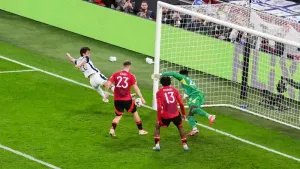Brennan Johnson was booed off the pitch in the match against Bournemouth when substituted in the 54th minute. In that game he registered 15 touches, 13 passes, 6 of which unsuccessful, and no shots whatsoever.
And it was the kind of performance from the Welsh winger, that the Tottenham Hotspur Stadium have seen many times before. Many Spurs faithful have it fresh in their memory last season's discussions of Johnson's utter ineffectiveness in some games.
But equally fresh in their memories will be his winning goal in the Europa League final, which ended Tottenham’s 17 year-long trophy drought.
Johnson was also Tottenham Hotspur’s last season top scorer and to this point, just over 2 years, he accrued a respectable 43 goal involvements for the club.
The hots and colds in Brennan Johnson’s game are stark, to the point where he developed a reputation for scoring goals in crucial moments despite remaining anonymous on the pitch for large chunks of games.
All this makes Brennan Johnson one of the more puzzling players in the current Spurs team.
To understand Brennan Johnson as a player a bit better, it might be useful to look closer at the kind of performance he's often been criticised for. Hopefully, we can learn something more about the kind of winger that Brennan Johnson is and the kind he isn’t, as well as the roles of wingers in a Thomas Frank team.
The System At Large
First, let’s take a look at the larger play patterns in Tottenham's 0-1 loss to Bournemouth to see where Johnson struggled.
It would be remiss not to mention that non only Brennan Johnson but every player in the North London side bar maybe goalkeeper Guglielmo Vicario had a proverbial 'stinker' of a performance.
This had as much to do with how the manager Thomas Frank set up his team to face Bournemouth's intelligent press, as it was down to the individual performances of the players in Lilywhite. Spurs struggled to physically impose themselves and get a foothold in the game, but, more than anything, they were completely impotent in possession, of which they had 62%.
It was a script reminiscent of the Postecoglou days. Despite having significantly more of the ball than the opposition, Tottenham registered a toothless 5 shots of which 1 on target, to Bournemouth's 20 and 5 respectively.
This was evidence of Bournemouth's exceptional game plan and preparation, as they exploited the weaknesses of the Spurs' personnel and the tactics of Thomas Frank. Let's take a look at two scenarios emblematic of Spurs' troubles during the game and see where the wingers come in.

Here, the Bournemouth players are occupying the right hand side, cutting out easy passing lanes to Pedro Porro, Cristian Romero and João Palhinha. Micky van de Ven is the only one able to comfortably receive the ball (note the distances between Porro and Semenyo, and Romero and Evanilson vs. how much free space there is on the left).
This leaves Vicario with two options, a short pass to Van de Ven and a long ball into the Middle Third to bypass the defensive third.
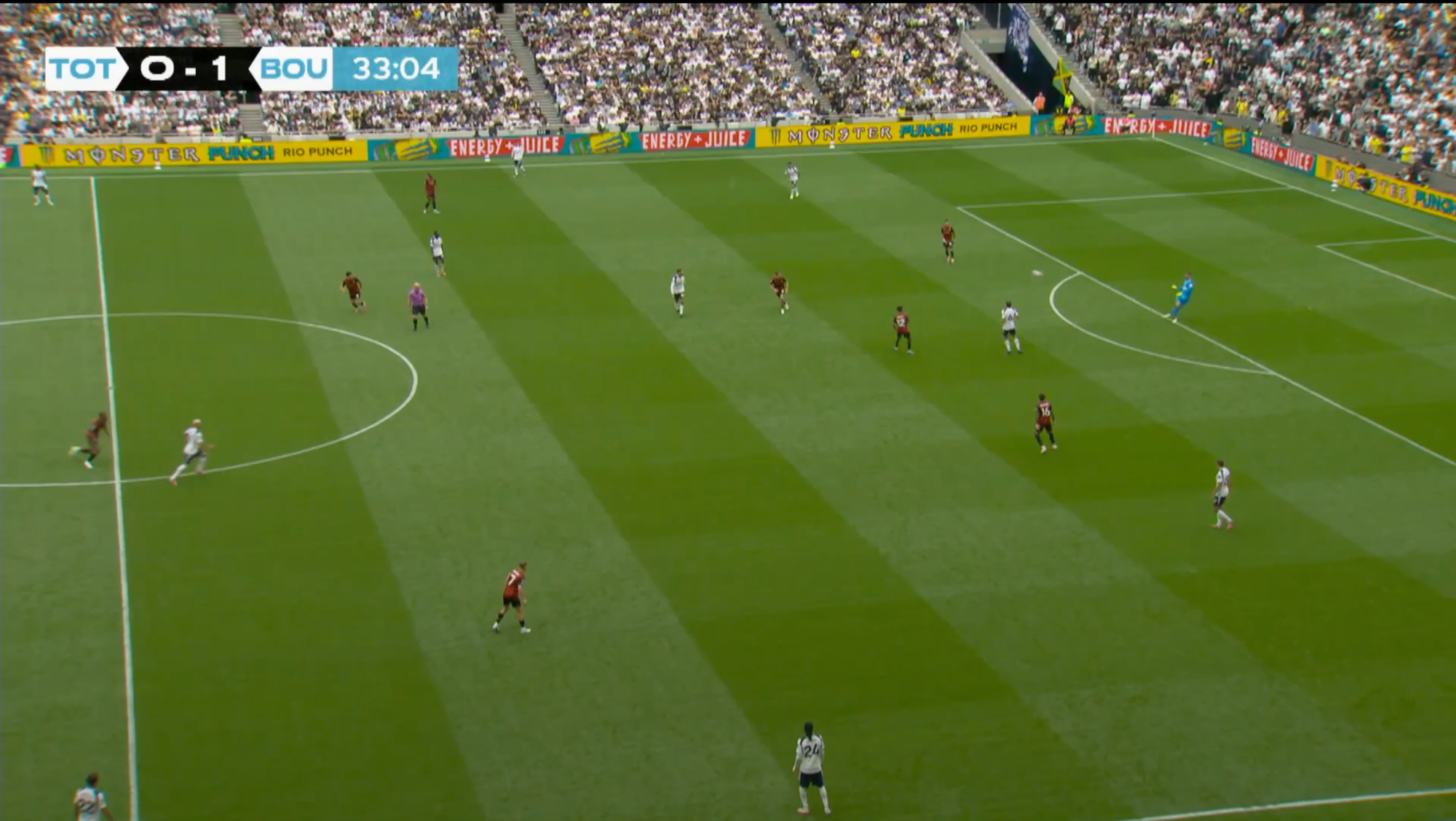
Vicario elects to go long...
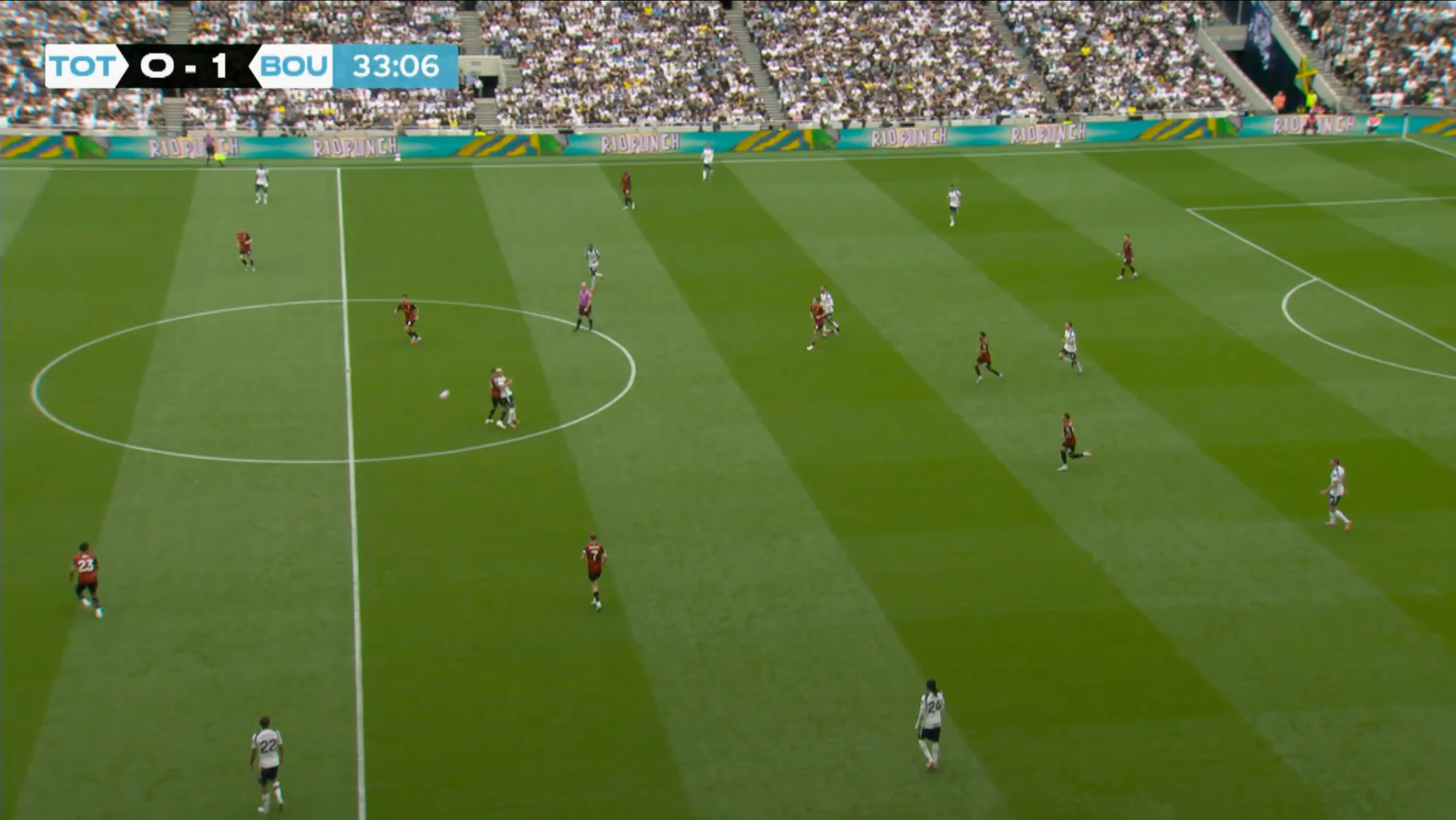
...but overhits slightly. Richarlison is unable to wriggle free of his marker and looses out, which leads to Spurs conceding possession.
Here, in a parallel scenario, Vicario takes the second option and makes the short pass to van de Ven instead.
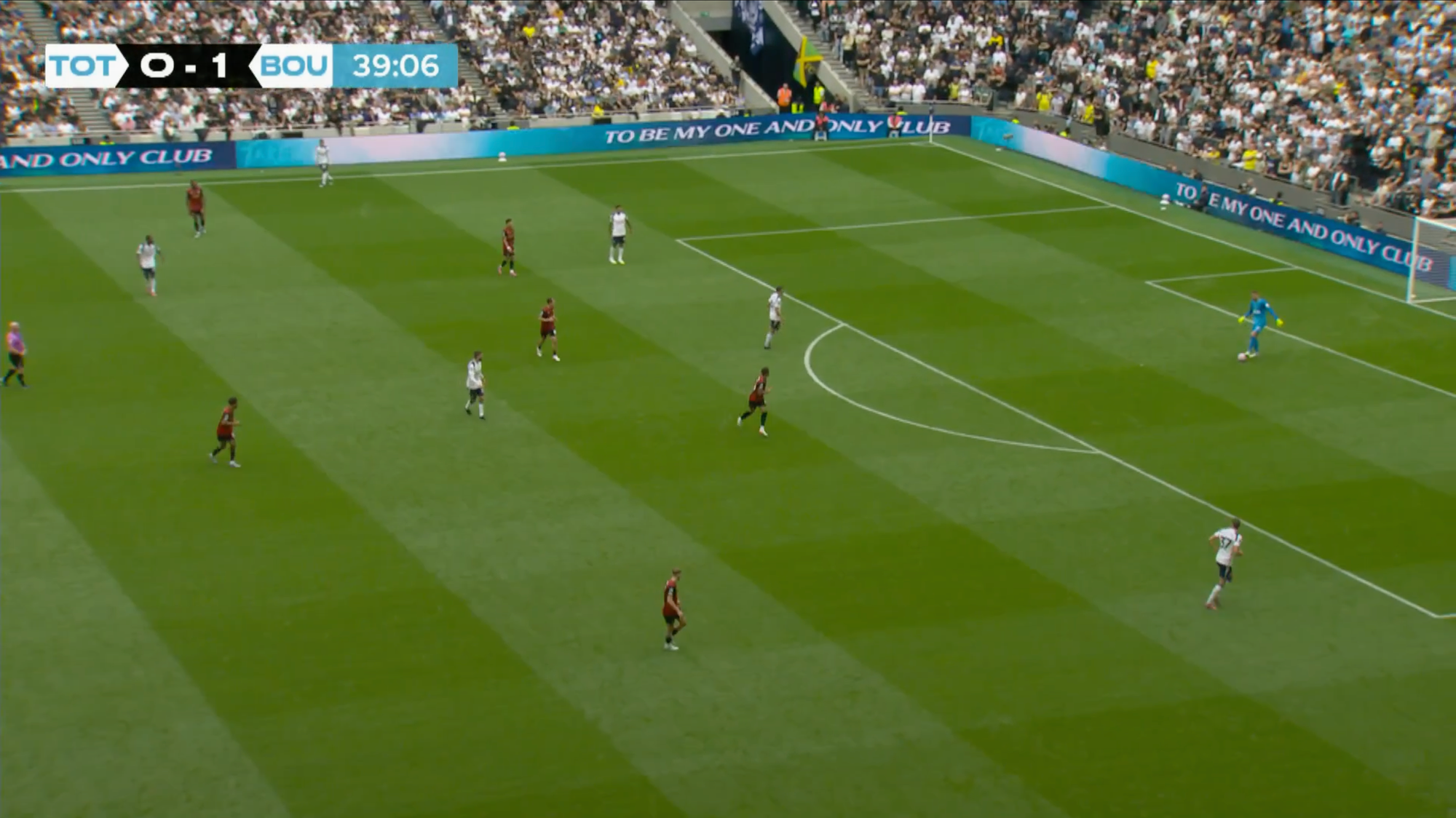
Van de Ven tries to find Richarlison...

But Richarlison again loses his physical battle with Diakité (the blur behind Richarlison) who essentially man-marked him out of the game. Diakité gets to the ball first and while Bournemouth concede the throw in, any momentum that Spurs were building is nullified.
This pattern of play repeated countless times in the first 60 or so minutes. Bournemouth banked that they could either outmuscle Spurs in competing for second balls or contain Spurs' buildup by channelling it to their left hand side.
And the gamble paid off. Bournemouth successfully occupied Spurs' best creators in Romero, Porro and Kudus, while on the other side Spence, Van de Ven and Johnson were unable to progress the ball in any meaningful way.
This was only exacerbated by Spurs' lack of presence in the midfield, as Thomas Frank was seemingly unwilling to drop his midfield deeper to help with buildup. This led to swathes of unoccupied space in the middle of the pitch.
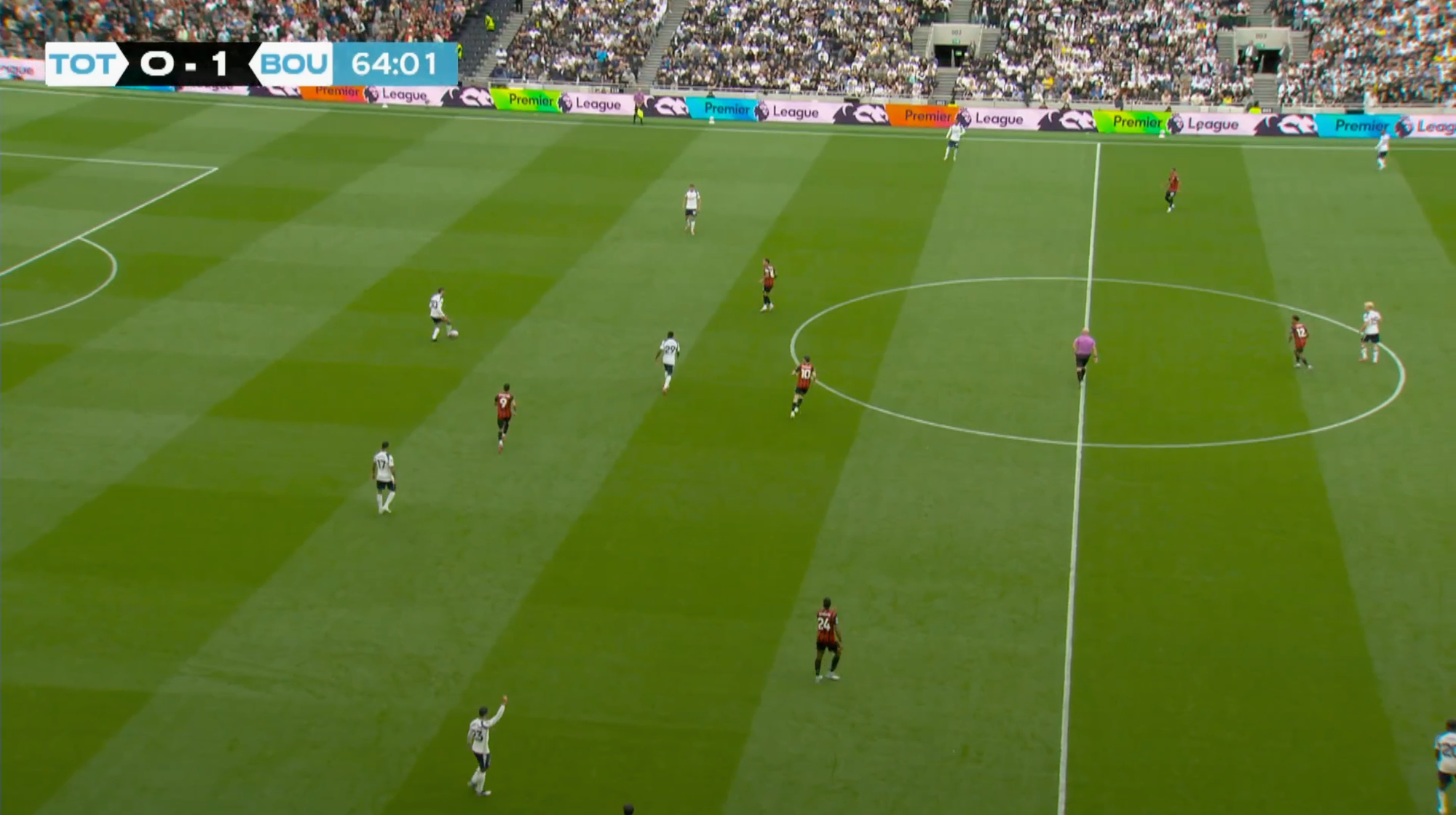
Furthermore, the glaring lack of creativity in the trio of Sarr, Bentancur and Palhinha (later replaced with Bergvall) left a disproportionate burden to create in the offensive third, on Tottenham's wingers.
This finally leads us back to Spurs' wingers. Kudus was being doubled-up on by Bournemouth’s defence nearly the entire game and had to take on multiple players when attempting to create chances.
On the other side, Brennan Johnson failed to complete a single take-on and only registered four progressive passes.
This should be no surprise because while technicality and dribbling are some of Kudus' biggest strengths, Johnson's passing range, creativity or dribbling simply aren't his strong suites.
Johnson's fortes are ball striking, knack for goal and his impeccable timing to arrive in the box to meet crosses, as we saw under Ange Postecoglou's tenure.
Despite originally trying to play Johnson in a traditional touchline winger role, by the end of the Australian's time at Spurs, Brennan Johnson would be given the freedom to occupy more central spaces, like for example in the final against Manchester United leading to his faithful goal.
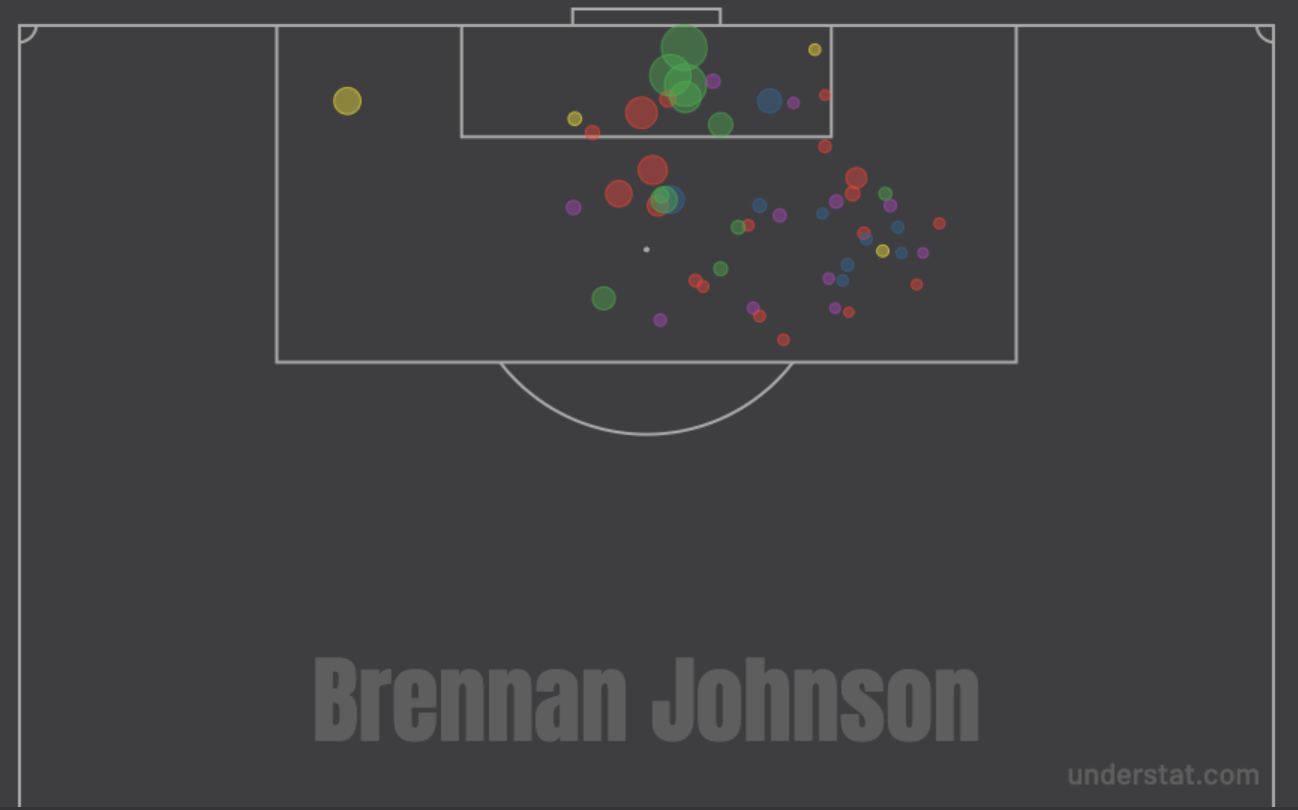
What could and perhaps should be surprising instead is the current Spurs’ boss decision to place a creative burden on a player not suited to it.
But given the lessons about Brennan, learned during Postecoglou's time at Spurs, it seems equally unlikely that Thomas Frank would wilfully play to the weaknesses of his players.
To me the much more likely explanation is that rather than Frank having unreasonable expectations of the Welshman the nature of the football matches one could expect to play as Tottenham Hotspur manager is different to what Frank is used to.
During Frank's last season at Brentford, he utilised the forward Kevin Schade on the left as a wide runner. Someone capable of running into space behind defenders after quick switches of play onto balls in behind, thanks to his explosive pace. A role in theory well suited to Brennan Johnson's profile.
But Brentford, while in the Premier League, were perennial relegation candidates and approached most games from the 'underdog' position, content to concede possession and play on the counter. The high frequency of counterattacks would more easily compensate for the limitations of Brentford's in-possession game.
Frank may have even imagined Johnson in a role similar to Schade's. But the demands placed on a winger in a Thomas Frank system are different when his team can exploit transitional moments and when his team has to generate chances against a settled defence.
In the vast majority of Spurs' matches the onus to control and exert dominance within games. is and will be on them, both from within the club and in the way that their opposition sets up against them.
This makes the lack of midfield presence and thus, an over reliance on wing play to progress the ball prime candidates to be exploited. And this is also what made Brennan Johnson’s performance against Bournemouth such an eyesore.
Therefore, the solution to the Brennan Johnson ‘problem’ is to evaluate how he’s being used in the first place and compensate for his weakness with a more robust tactical plan.
Whether this is by surrounding him with more creative players or channelling more of Spurs build-up through the midfield to open up more space on the wings, is up for Thomas Frank to decide.
His reputation as a pragmatist should make him well equipped to figure out how to utilise Johnson’s unique skillset to its greatest effect and perhaps, we will see those first efforts against West Ham already.
We’ll come back after the West Ham game to see how Frank responded to the challenges posed by Bournemouth.
Spurs kick off against West Ham this Saturday at 5:30PM.

